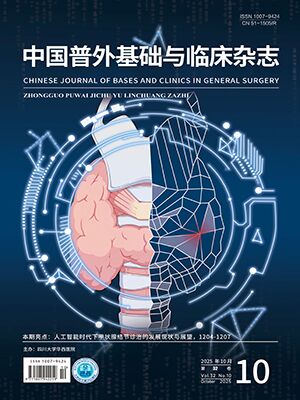| 1. |
Tuccitto A, Shahaj E, Vergani E, et al. Immunosuppressive circuits in tumor microenvironment and their influence on cancer treatment efficacy. Virchows Arch, 2019, 474(4): 407-420.
|
| 2. |
Cecchetti S, Spadaro F, Lugini L, et al. Functional role of phosphatidylcholine-specific phospholipase C in regulating CD16 membrane expression in natural killer cells. Eur J Immunol, 2007, 37(10): 2912-2922.
|
| 3. |
Huang Y, Yin HJ, Ma XJ, et al. Correlation between FcγRⅢa and aortic atherosclerotic plaque destabilization in ApoE knockout mice and intervention effects of effective components of chuanxiong rhizome and red peony root. Chin J Integr Med, 2011, 17(5): 355-360.
|
| 4. |
Chauhan AK, Chen C, Moore TL, et al. Induced expression of FcγRⅢa (CD16a) on CD4+, T cells triggers generation of IFN-γhigh, subset. J Biol Chem, 2015, 290(8): 5127-5140.
|
| 5. |
顏登國, 王國棟, 程海玉. 基因芯片技術分析結直腸癌肝轉移患者免疫基因表達的變化. 中國普外基礎與臨床雜志, 2012, 19(11): 1182-1186.
|
| 6. |
Livak KJ, Schmittgen TD. Analysis of relative gene expression data using real-time quantitative PCR and the 2(-Delta Delta C(T)) method. Methods, 2001, 25(4): 402-408.
|
| 7. |
Agarwal A, Agrawal U, Verma S, et al. Serum Th1 and Th2 cytokine balance in patients of superficial transitional cell carcinoma of bladder pre- and post-intravesical combination immunotherapy. Immunopharmacol Immunotoxicol, 2010, 32(2): 348-356.
|
| 8. |
王靜, 徐向上, 曹志新, 等. Th細胞因子在結直腸癌組織中的表達. 中華實驗外科雜志, 2010, 27(1): 62-64.
|
| 9. |
Balkwill F. Tumour necrosis factor and cancer. Nat Rev Cancer, 2009, 9(5): 361-371.
|
| 10. |
Chung SS, Wu Y, Okobi Q, et al. Proinflammatory cytokines IL-6 and TNF-α increased telomerase activity through NF-κB/STAT1/STAT3 activation, and withaferin a inhibited the signaling in colorectal cancer cells. Mediators Inflamm, 2017, 2017: 5958429.
|
| 11. |
Wang H, Wang HS, Zhou BH, et al. Epithelial-mesenchymal transition (EMT) induced by TNF-α requires AKT/GSK-3β-mediated stabilization of snail in colorectal cancer. PLoS One, 2013, 8(2): e56664.
|
| 12. |
Al Obeed OA, Alkhayal KA, Al Sheikh A, et al. Increased expression of tumor necrosis factor-α is associated with advanced colorectal cancer stages. World J Gastroenterol, 2014, 20(48): 18390-18396.
|
| 13. |
向本旭, 劉婷婷, 孫芳玲, 等. VEGF相關信號通路在血管新生中的研究進展. 中國比較醫學雜志, 2015, 25(12): 81-86.
|
| 14. |
Talmadge JE, Gabrilovich DI. History of myeloid-derived suppressor cells. Nat Rev Cancer, 2013, 13(10): 739-752.
|
| 15. |
Nagasaki T, Hara M, Nakanishi H, et al. Interleukin-6 released by colon cancer-associated fibroblasts is critical for tumour angiogenesis: anti-interleukin-6 receptor antibody suppressed angiogenesis and inhibited tumour-stroma interaction. Br J Cancer, 2014, 110(2): 469-478.
|
| 16. |
Tseng-Rogenski SS, Hamaya Y, Choi DY, et al. Interleukin 6 alters localization of hMSH3, leading to DNA mismatch repair defects in colorectal cancer cells. Gastroenterology, 2015, 148(3): 579-589.
|
| 17. |
Bunt SK, Yang L, Sinha P, et al. Reduced inflammation in the tumor microenvironment delays the accumulation of myeloid-derived suppressor cells and limits tumor progression. Cancer Res, 2007, 67(20): 10019-10026.
|
| 18. |
Tsukamoto H, Nishikata R, Senju S, et al. Myeloid-derived suppressor cells attenuate TH1 development through IL-6 production to promote tumor progression. Cancer Immunol Res, 2013, 1(1): 64-76.
|
| 19. |
曾艷, 張力, 賀帥. 結直腸癌患者血清CEA和CA19-9水平與肝轉移的關系. 癌癥進展, 2019, 17(13): 1586-1589.
|
| 20. |
朱攀, 雷蜜, 高波. 腫瘤標志物及血管新生因子與結直腸癌患者臨床分期及腫瘤轉移相關. 基礎醫學與臨床, 2019, 39(1): 59-62.
|
| 21. |
湯俊, 黃春錦, 陳璽. 老年結直腸癌患者血清內CEA、AFP、CA50、CA199和CA724的表達及意義. 實用癌癥雜志, 2019, 34(3): 397-399, 406.
|
| 22. |
閆先俠, 王傳新, 牛愛軍, 等. 結直腸癌及淋巴結組織CEA mRNA表達的實時熒光定量檢測. 中華腫瘤防治雜志, 2008, 15(16): 1255-1258.
|
| 23. |
陳巖松, 陳燕, 陳娜娟. 結直腸癌患者血清白細胞介素6水平及與腫瘤療效關系. 標記免疫分析與臨床, 2017, 24(11): 1274-1279.
|
| 24. |
馮仕庭, 孫燦輝, 彭振鵬, 等. 結直腸癌MVD和VEGF與臨床及病理諸因素的相關性研究. 中山大學學報: 醫學科學版, 2009, 30(4S): 234-238.
|
| 25. |
史艷俠, 張曉實, 夏建川, 等. B-NHL患者NK細胞中CD16ζ表達及利妥昔單抗與LAK細胞的聯合抗瘤作用. 癌癥, 2007, 26(8): 837-842.
|
| 26. |
Kobayashi E, Motoi S, Sugiura M, et al. Antibody-dependent cellular cytotoxicity and cytokine/chemokine secretion by KHYG-1 cells stably expressing FcγRⅢA. Immunol Lett, 2014, 161(1): 59-64.
|
| 27. |
Capuano C, Pighi C, Molfetta R, et al. Obinutuzumab-mediated high-affinity ligation of FcγRⅢA/CD16 primes NK cells for IFNγ production. Oncoimmunology, 2017, 6(3): e1290037.
|
| 28. |
Li XY, Wu L, Li SW, et al. Effect of CD16a, the surface receptor of Kupffer cells, on the growth of hepatocellular carcinoma cells. Int J Mol Med, 2016, 37(6): 1465-1474.
|




